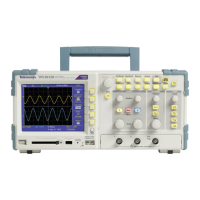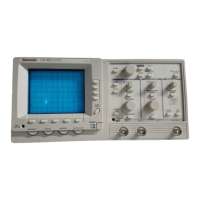Getting Started
Probe Safety
Check a nd observe probe ratings before using p robes.
A guard around the probe body provides a finger barrier for p rotection from
electric shock.
Finger guard
WARNING. To avoid electric shock when using the probe, keep fingers behind
the guard on the probe body.
To avoid electric shock while using the probe, do not touch metallic portions of
the probe head while it is connected to a voltage source.
Connect the probe to the oscilloscope, and connect the ground t erminal to ground
before you take any measurements.
Any probe or cable used to apply m ore than 30 VAC
RMS
(42 V peak) to the
oscilloscope BNC input connector must be third-party certified for the voltage
to be a
pplied, including rating the probe reference lead or cable s hield to float to
600 V
RMS
CAT II.
This
manual contains important information on isolated channels, floating
measurements, and high voltages. (See page 3, Taking Floating M easurements.)
WARNING. Do not float the TPP0101 or TPP0201 probe reference lead to >
30 V
RMS
. Use the P5120 probe (floatable to 600 V
RMS
CAT II or 300 V
RMS
CAT III)
or similarly rated, passive, high voltage probe (not the ground referenced P5100
probe), or an appro priately rated, high voltage, differential p robe when floating
th
e reference lead above 30 V
RMS
, subject to the ratings of such high voltage probe.
To avoid electric shock when using probes with exposed metal parts, do not
c
onnect the reference lead to voltages above 30 V
RMS
.
10 TPS2000B Series Digital Oscilloscope User Manual

